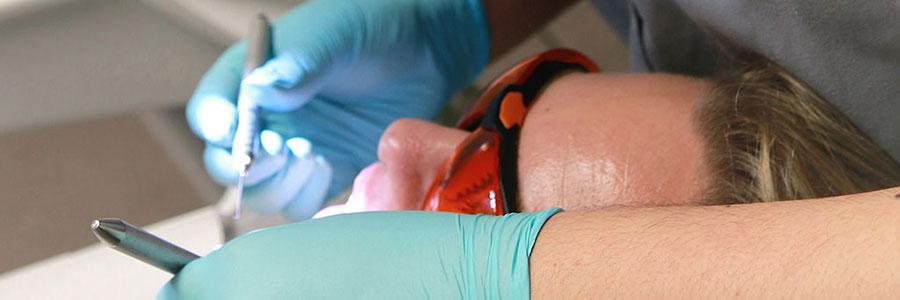You are not alone
Losing or damaging a tooth for the first time can be a frightening experience. But did you know that half of the world's population is missing one or several teeth? There are many different reasons for this such as an accident, illness or insufficient care.
Not visible doesn't mean unnecessary
In modern society, an attractive, natural-looking smile is seen as a symbol of beauty and health. That's why most people wouldn't think long before having missing front teeth restored. But what happens, if a tooth in the back of your mouth is lost or has to be pulled? Since it is hidden from sight, you might not see the immediate need to replace it. However, leaving a missing tooth untreated can have serious consequences for your health, your appearance and your daily life.
What happens when a tooth is missing?
A healthy tooth has many different roles to play in the back of your mouth. It helps you chew and grind food without problem and stabilizes the teeth around it.
Effects on surrounding teeth
If you lose a tooth in the back of your mouth, this has an effect on surrounding teeth. Through the lack of stability, neighbouring teeth are left without support. They start shifting and can even collapse. Teeth in the opposing jaw can grow into the gap. This can make it difficult or even impossible to replace the missing tooth in future and collapsing teeth might have to be taken out as well. The more teeth are missing in your mouth, the more challenging it can become to replace them.

Effects on jaw bone and gums
Healthy teeth constantly perform tiny micro-movements in your mouth stimulating your gums and jaw bone in the process. If the interplay between your teeth and bone is upset, because a tooth is lost, this stimulation is reduced. Your jaw bone starts shrinking and your gum pulls back accordingly.
Effects on your appearance
Missing teeth and bone can no longer support your lips from the inside. The more teeth you lose, the more your face will change and look older and wrinkly. Your cheeks and lips are left without the necessary support and become hollow and saggy.
Effects on your everyday life
Not replacing one tooth can start a chain reaction of consequences, at the end of which you may find yourself avoiding certain foods that have become difficult to eat. Self-conscious about gaps in your mouth and your changed appearance, you may stop going out or meeting friends and family.
To avoid these consequences, speak to your dentist about missing or damaged teeth. With the help of modern dental restorations your tooth can be replaced and bring back your smile and quality of life.
Your dentist can help
What are replacement teeth?
Dental crowns and bridges are called replacement teeth, which are used to replace any tooth that is missing or beyond repair. They can be placed on natural teeth or on dental implants.
Replacement teeth on natural teeth
To restore missing teeth, your dentist can use a bridge made of several replacement teeth, which will be anchored to adjacent teeth to literally “bridge” the gap. To secure the bridge, adjacent teeth must be reduced in size by your dentist, which can mean sacrificing healthy teeth.
A bridge is normally made of natural-looking material such as ceramics. A dental laboratory designs each bridge individually to make it look and feel like your natural teeth.
Beware that instead of all-ceramics, dentists still sometimes offer metal crowns and bridges with porcelain fused on top. When your gum recedes, a black metal line at the rim of the bridge may become visible. For best esthetic results always ask your dentist for an all-ceramic bridge.
Also, a bridge doesn‘t keep your jaw bone from shrinking and your gums will continue to pull back over time.
To avoid these clear disadvantages, your dentist needs to replace the tooth root, too. The best way to do this is with a dental implant made of titanium.
Replacement teeth on dental implants
Dental implants are inserted into your jaw bone and act just like the tooth roots of your natural teeth. With this procedure, healthy adjacent teeth are left untouched.







